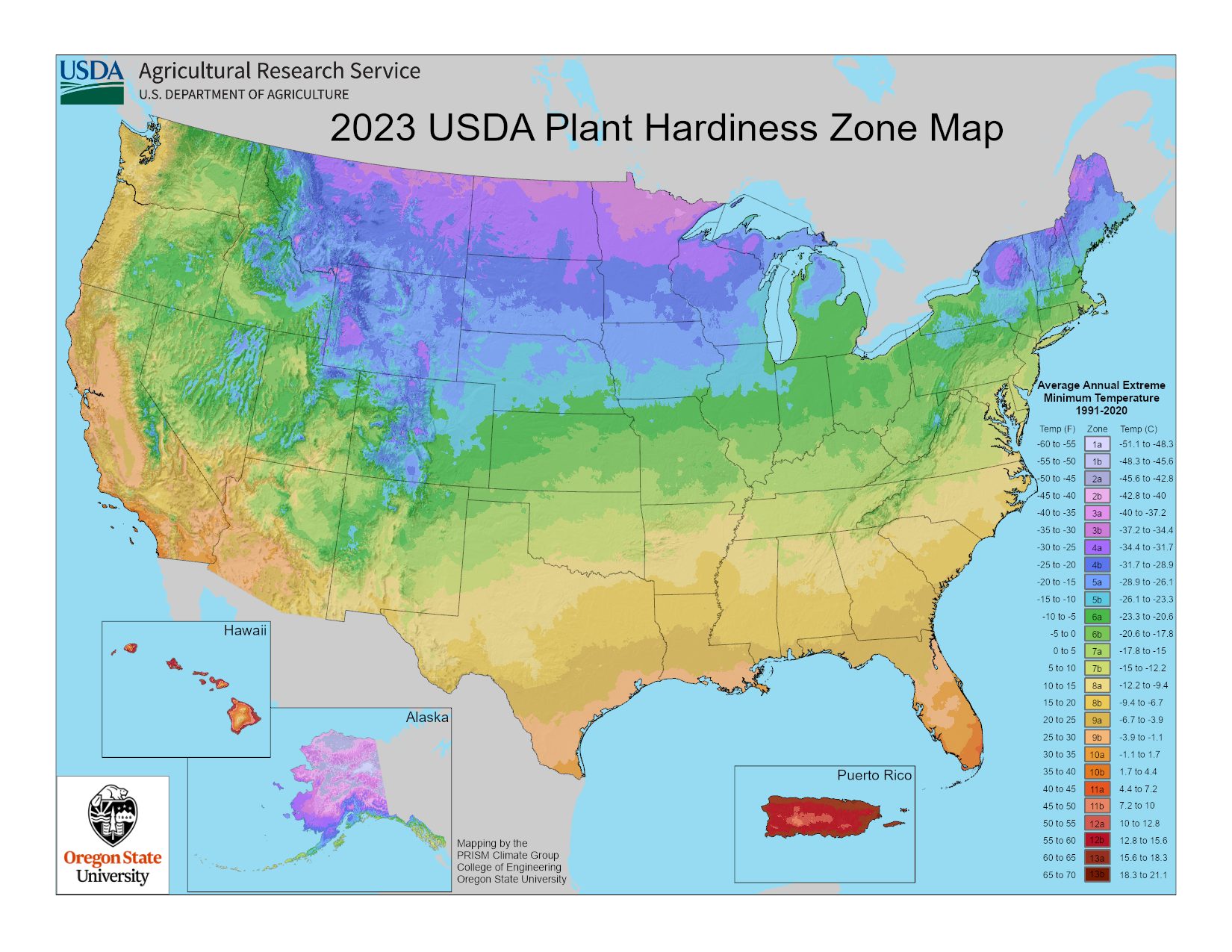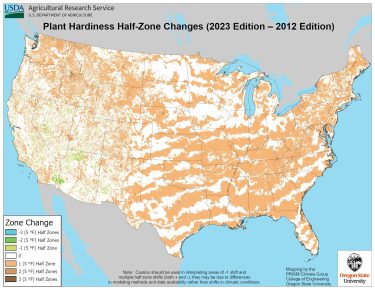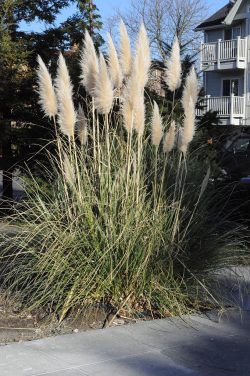
The official map that helps gardeners and farmers decide what to plant has undergone a dramatic shift, thanks in large part to climate change.
The U.S. Department of Agriculture periodically updates its plant hardiness map, which divides the country into zones defined by their average coldest winter temperatures. Home gardeners and large-scale agricultural operations alike use the map to determine which plant species will survive in their area.
The 2023 update, released in mid-November, shows that about half of the country has moved into a warmer hardiness zone. Overall, the map is about 2.5 degrees Fahrenheit warmer than the previous map from 2012.
“This is a big jump,” said Ray Larson, associate director and curator of the UW Botanic Gardens. “We’re still going to have cold years from time to time, but the trend is definitely getting warmer.”

New plants, more bugs
While every region of the country saw changes, the Seattle area shifted from zone 8b (an average coldest day of 15-20 degrees F) to zone 9a (an average coldest day of 20-25 degrees F). These changes mean that some plants can now survive in regions that were previously too cold.
“That doesn’t mean we can suddenly grow plants from southern California in the Pacific Northwest, but we do take it into account when selecting plants at the Arboretum,” Larson said. “We just added a lot of new species to our rhododendron collection, some of which are threatened in the wild. You would have needed a greenhouse to grow some of them 50 years ago, and now we can grow them outdoors.”
“I would recommend that people check the label on plants they’re considering and maybe adjust half a zone colder,” he added. “That will reduce the likelihood that your plants will die off if we have a particularly cold winter.”
While the plant hardiness map may present new possibilities for gardeners, it also carries a host of risks. With warmer minimum temperatures, certain insects that would otherwise die off in winter can survive year-round — and as maximum temperatures rise in the summer, heat-stressed plants can become prime targets for destructive pests such as the bronze birch borer and western pine beetle.
Agriculture also faces challenges. Fruit trees, for example, require a number of cold days each winter to properly flower and set fruit in the spring. In Washington, where chilly temperatures help support the production of more apples, cherries and blueberries than in any other state, warming winters could negatively impact harvests.
“We’re also seeing more invasive plants moving north,” Larson said. “For example, pampas grass is a problem in California, but over the last 15 or 20 years it has been encroaching into the Pacific Northwest. You see this with a lot of agricultural weeds as well.”

Climate change and growing cities
While climate change is the primary culprit behind shifting plant hardiness zones, it doesn’t tell the whole story.
For one, this latest map pulled data from more than 13,000 weather stations across the country — about 5,000 more than the previous map used in 2012. Those additional stations provided a clearer picture of the many microclimates across the U.S., leading to some changes that are simply the result of having better data.
The country’s rapidly growing cities have also played a role. Paved roads and buildings absorb and emit more heat than green spaces, giving rise to urban heat islands — when cities are warmer than rural areas nearby.
But ultimately, the driving force behind these warmer winter temperatures is our changing climate.
“When you combine these higher minimum temperatures with the higher maximum temperatures we’re experiencing in the summer, you really start to see the pattern of warming,” Larson said. “The changes have been pretty dramatic.”

A double-edged sword
While the new hardiness zones are based on the average coldest temperature each year, the timing of temperature swings can be just as important.
“If you have an early cold snap in November, it’s going to be a lot worse for your plants than one in January after they’ve had a chance to harden up for the winter,” Larson said. “And if you don’t get any rain in May when it’s needed most, a hot summer is going to cause even more stress on the plants. So even if the average temperatures aren’t changing much, the stresses on our plants and the resulting disease and insect problems are really telling us that things are different.”
As some rejoice at the thought of new perennials in their garden, Larson notes that the changing reality is a double-edged sword.
“All of us who work with living things outside every day are seeing the impacts,” he said. “And it’s happening quicker than we would have expected even 10 years ago.”
Story by Will Shenton

